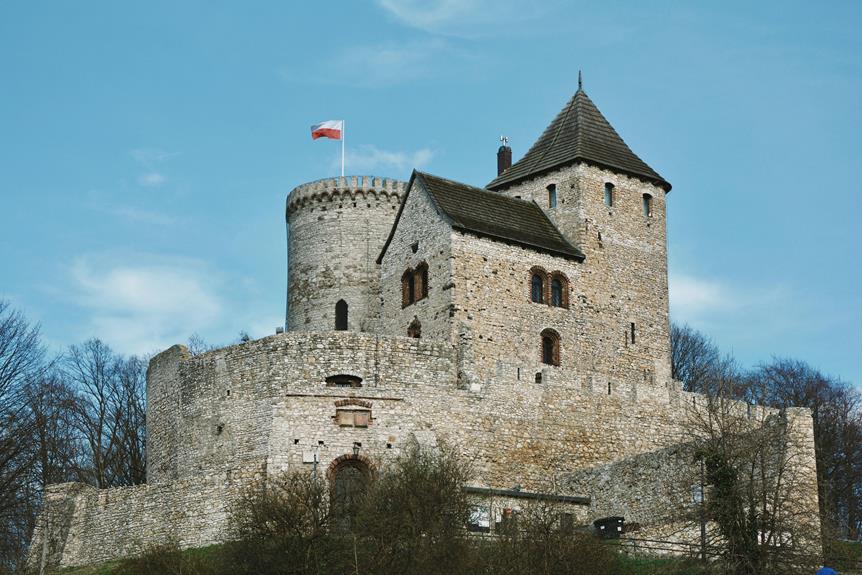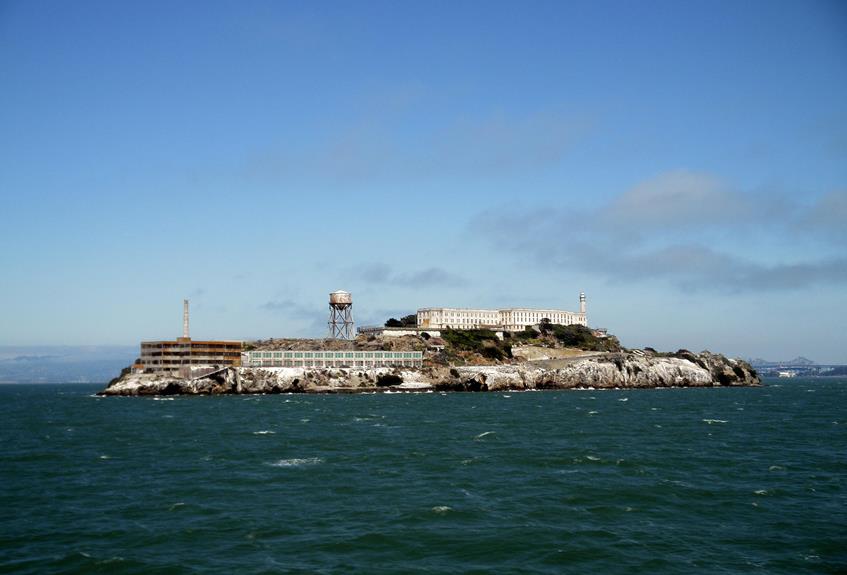The Tower of London, a formidable structure with roots dating back centuries, is not merely a physical edifice but a living proof to the complexities of British history. From its origins as a royal residence to its darker role as a site of imprisonment and execution, the Tower harbors centuries of stories waiting to be unraveled. As visitors walk through its ancient corridors and gaze upon the Crown Jewels, they are confronted with a tangible connection to a past that continues to intrigue and captivate.
Key Takeaways
- Built by William the Conqueror in the 1070s.
- Houses the renowned Crown Jewels.
- Offers guided tours by Yeoman Warders.
- Steeped in centuries of royal history.
- Witness historic architecture like the White Tower.
History of the Tower
The history of the Tower of London dates back over a thousand years, encompassing a complex tapestry of events that have shaped its significance in British history. Originally built by William the Conqueror in the 1070s, the Tower's primary purpose was to assert power over the newly conquered city of London. Its origins as a symbol of Norman rule evolved over the centuries, with successive monarchs adding to its construction, expanding its functions beyond just a fortress to include uses as a royal palace, treasury, armory, and even a menagerie.
Throughout its history, the Tower of London has housed numerous royal residents, serving as a residence for monarchs during times of political unrest or as a secure location for important ceremonies. The Tower's walls have also confined many famous prisoners over the centuries, including Anne Boleyn, Queen of England and second wife of Henry VIII, and Sir Walter Raleigh, a renowned explorer and favorite of Queen Elizabeth I.
The construction of the Tower of London reflects the evolving architectural styles of different historical periods, blending elements of Norman, Medieval, and Tudor architecture. Its iconic White Tower, the central keep of the fortress, stands as a testament to the military might and strategic vision of its original builders. The Tower's history is not just a chronicle of stone and mortar but a living narrative of power, politics, and resilience that continues to captivate visitors from around the world.
Notable Features and Attractions
Amidst the historical grandeur of the Tower of London lies a collection of notable features and attractions that offer visitors a glimpse into centuries of royal history and architectural marvels. From secret passages that whisper tales of intrigue to the mysterious raven guardians that have become an integral part of the Tower's folklore, there is much to explore within the walls of this iconic fortress.
- Secret Passages: The Tower of London boasts a network of secret passages that wind their way through the ancient stone walls. These passages were once used by royals and their confidants to move discreetly throughout the fortress, evading prying eyes and ears.
- Raven Guardians: One of the most famous attractions at the Tower of London is the presence of the legendary raven guardians. These majestic birds have been a part of the Tower for centuries, with folklore suggesting that if they ever leave, the kingdom will fall. Visitors can witness the daily feeding of the ravens, a tradition that has been upheld for generations.
- Historic Architecture: The Tower of London features a remarkable display of historic architecture, including the iconic White Tower, which dates back to the 11th century. Visitors can marvel at the intricate stonework, imposing battlements, and medieval grandeur of this architectural masterpiece.
- Yeoman Warders: The Yeoman Warders, also known as Beefeaters, are a significant feature of the Tower of London. These ceremonial guardians offer guided tours of the fortress, regaling visitors with fascinating stories of its history and inhabitants.
The Crown Jewels
Nestled within the fortified walls of the Tower of London lies a collection of treasures that embody centuries of regal opulence and historical significance – the Crown Jewels. These royal treasures consist of crowns, scepters, orbs, swords, and other ceremonial regalia used in coronations and other state occasions. The Crown Jewels are not only symbols of monarchy but also serve as a testimony to the enduring traditions and grandeur of the British monarchy.
Among the hidden gems of the Crown Jewels is the Imperial State Crown, a masterpiece adorned with over 2,800 diamonds, including the famous Cullinan II diamond, and other precious gemstones. This crown is worn by monarchs during the State Opening of Parliament and is a dazzling sight to behold. Another remarkable piece is the Sovereign's Sceptre with Cross, which contains the Cullinan I diamond, the largest clear-cut diamond in the world.
Visitors to the Tower of London have the privilege of witnessing these exquisite royal treasures firsthand, marveling at the craftsmanship and artistry that went into creating these priceless artifacts. The Crown Jewels not only represent the wealth and power of the British monarchy but also offer a glimpse into the history and heritage of the nation. Each piece tells a story of tradition, ceremony, and the enduring legacy of the crown.
Tales of Treason and Execution
Within the somber walls of the Tower of London, echo the haunting tales of treason and execution that have left an indelible mark on the pages of history. The Tower stands as a silent witness to centuries of betrayal and retribution, where traitorous plots and infamous prisoners have shaped its dark legacy.
- The Gunpowder Plot: One of the most infamous events linked to the Tower of London is the Gunpowder Plot of 1605. Guy Fawkes and his co-conspirators attempted to blow up the Houses of Parliament, leading to their arrest and subsequent executions.
- Anne Boleyn: Perhaps one of the most well-known executions at the Tower, Anne Boleyn, the second wife of King Henry VIII, was beheaded on charges of adultery, incest, and treason in 1536.
- The Princes in the Tower: The mysterious disappearance of the young princes, Edward V and Richard of Shrewsbury, in the 15th century remains a topic of debate and speculation, with many believing they were murdered within the Tower's walls.
- The Execution Site: The Tower Green, within the fortress, was the site of numerous executions, including those of queens, nobles, and commoners, serving as a chilling reminder of the consequences of crossing the monarchy.
These tales of intrigue, betrayal, and ultimate punishment serve as a stark reminder of the Tower of London's grim past, inviting visitors to explore the darker chapters of England's history.
Practical Visitor Information
For those planning a visit to the Tower of London, essential practical information can enhance the overall experience and guarantee a smooth exploration of this historic site. When it comes to visitor services, the Tower offers a range of amenities to make sure a comfortable visit. Visitors can enjoy guided tours, audio guides, and interactive exhibitions that bring the history of the Tower to life. Additionally, there are gift shops where you can purchase souvenirs and cafes where you can grab a bite to eat during your visit.
Here is a table highlighting the current ticket prices for visiting the Tower of London:
| Ticket Type | Price (GBP) |
|---|---|
| Adult | £28.90 |
| Child (5-15 years) | £14.40 |
| Concession | £22.70 |
It is important to note that ticket prices may vary for special exhibitions or events, so it is advisable to check the official Tower of London website for the most up-to-date information. Visitors can purchase tickets online in advance to avoid long queues at the entrance. The Tower is open throughout the year, with varying opening hours, so planning your visit ahead of time is recommended to make the most of your experience.
Frequently Asked Questions
What Is the Oldest Building Within the Tower of London Complex?
The oldest structure within the Tower of London complex holds significant historical value. It showcases architectural prowess and cultural relevance. This building stands as a proof to the enduring legacy of past civilizations and serves as a window into the rich tapestry of human history.
Its age and historical significance not only contribute to its allure but also highlight its pivotal role in shaping the narrative of the past.
Are There Any Ghost Sightings Reported Within the Tower of London?
Paranormal activity and hauntings often intertwine with historical mysteries and legends, enchanting many with tales of ghostly encounters.
Reports of ghost sightings add a layer of intrigue to certain locations, sparking curiosity and speculation about the supernatural.
Whether rooted in folklore or personal experiences, these accounts contribute to the mystique surrounding such places, inviting contemplation of the unknown and prompting further exploration into the domain of the unexplained.
How Often Are the Crown Jewels Cleaned and Maintained?
Regular maintenance of the crown jewels is essential to preserve their historical significance. These priceless treasures undergo meticulous cleaning and upkeep to guarantee their longevity and appearance.
Highly skilled professionals follow strict protocols to handle and care for the jewels, utilizing specialized techniques and tools.
This regular maintenance not only safeguards the jewels' physical condition but also honors their cultural and historical importance for future generations to appreciate.
Can Visitors Access All Areas of the Tower of London Independently?
While some areas of the Tower of London may be off-limits to independent exploration, visitors have the opportunity to roam freely through many sections.
However, to fully immerse oneself in the historical significance and tales of yore, guided tours and audio guides are available.
Interactive exhibits and a treasure trove of historical artifacts await those who seek a deeper understanding of this iconic landmark, ensuring a journey rich with discovery and wonder.
Are There Any Secret Passageways or Hidden Rooms in the Tower of London?
When exploring historical sites, the allure of secret tunnels and mysterious chambers often captures the imagination. These hidden passageways and concealed rooms can add an air of intrigue to the visitor experience.
Whether used for strategic purposes or as clandestine routes, uncovering such architectural features can provide insight into the hidden layers of history within a structure. Delving into the existence of secret tunnels and concealed chambers can enhance the exploration of any historical site.
Conclusion
To sum up, the Tower of London has stood for over a thousand years, showcasing the rich history and heritage of the British monarchy. With over 2.8 million visitors annually, it remains one of the most popular tourist destinations in the United Kingdom.
Its historic architecture, royal treasures, and dark tales of treason and execution continue to captivate visitors from around the world, making it a must-visit landmark for those interested in British history.


